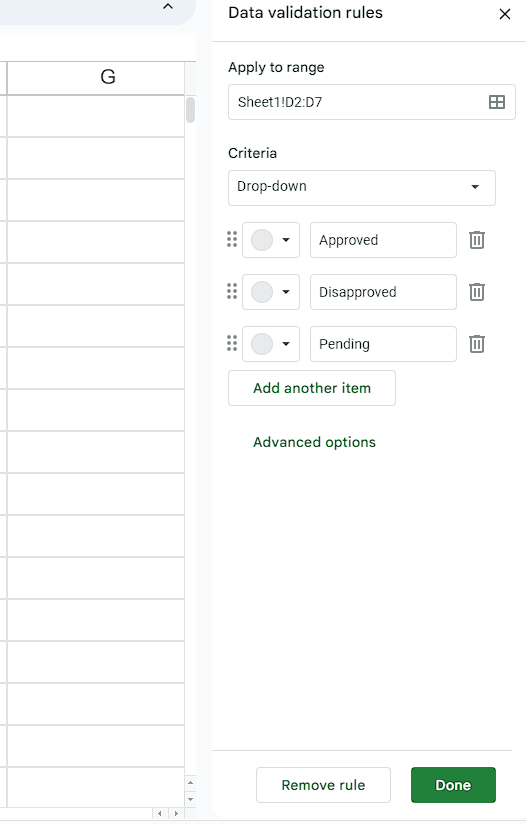How to add a range in Google Sheets
In Google Sheets, a range refers to a group of cells within a spreadsheet that is selected together. Adding a range allows you to perform various tasks, such as applying a formula or function to a specific set of cells, formatting a range of cells, or creating a chart based on the data in the range.
In this tutorial, we will learn how to add a range in Google Sheets. Adding a range of cells in Google Sheets is straightforward and can be accomplished using the SUM function. To reference a range, one can use a colon (:) or click and drag the mouse to select a contiguous range. However, for a non-contiguous range, one must select the range by holding the CTRL key or adding the reference of each cell, separated by a comma.
Method 1: Adding a Contiguous Range Using a Colon
Step 1 – Select a Blank Cell and Place an Equals Sign
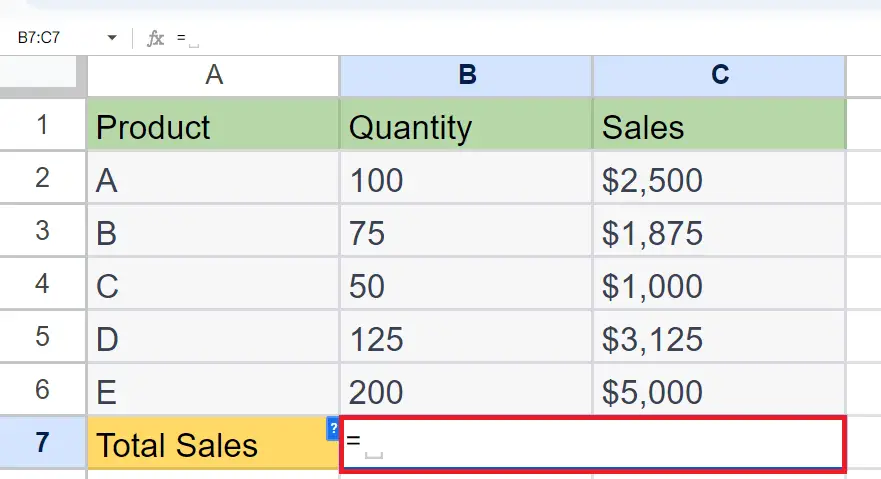
- Select a blank cell.
- Place an Equals sign in the blank cell.
Step 2 – Enter the SUM Function
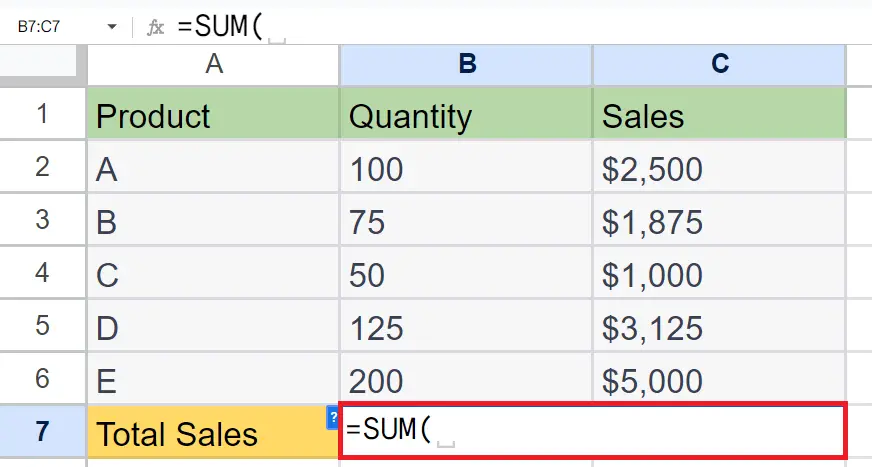
- Enter the SUM function next to the Equals sign.
- Open the parentheses.
Step 3 – Enter the Reference of the First Cell
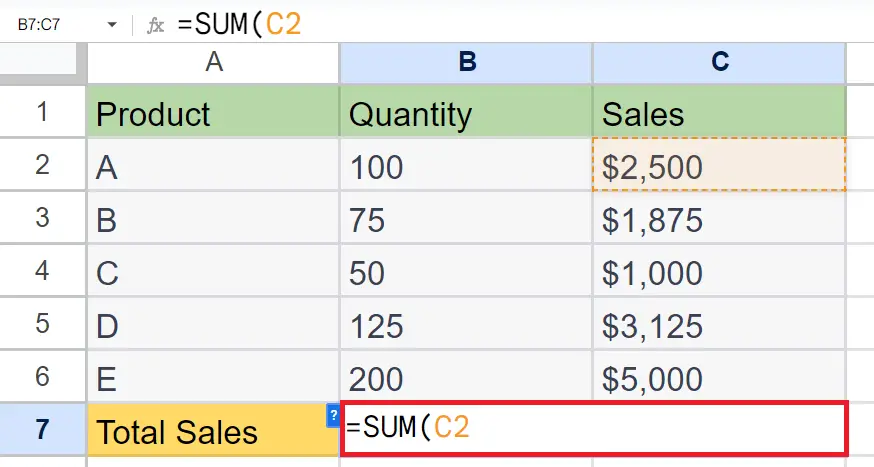
- Enter the reference of the first cell of the range to be added.
Step 4 – Place a Colon
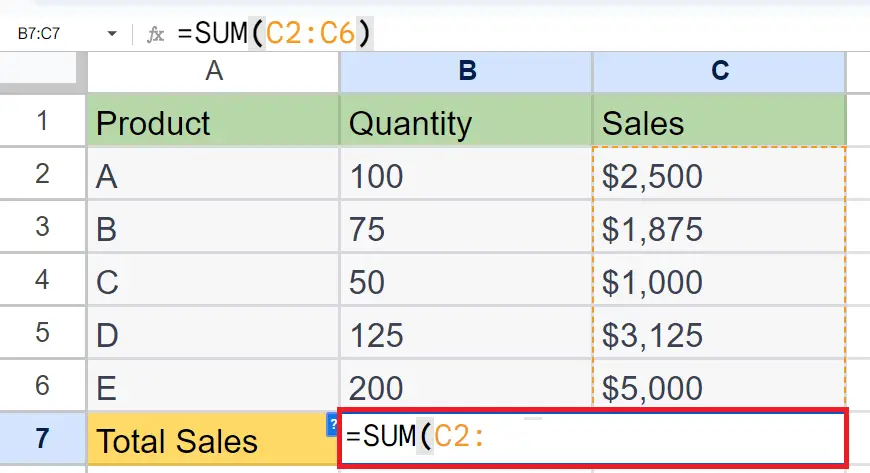
- Place a colon ( : ) next to the reference of the first cell.
Step 5 – Enter the Reference of the Last Cell
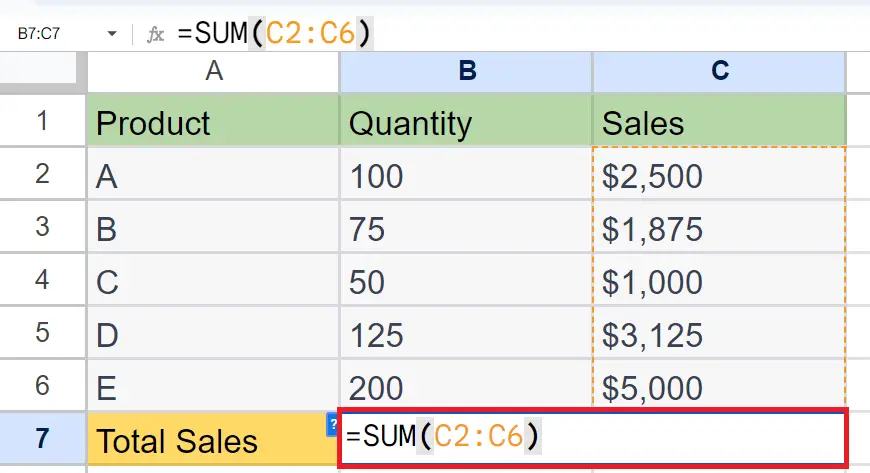
- Enter the reference of the last cell of the range to be added.
- Close the parentheses.
Step 6 – Press the Enter Key
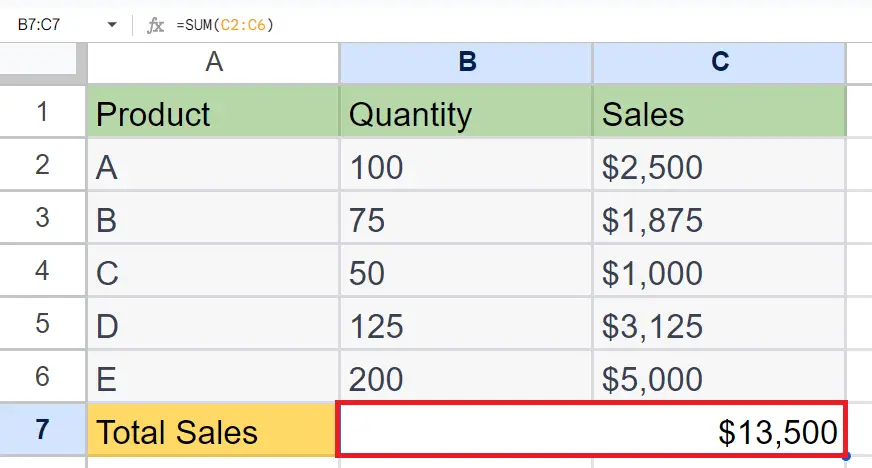
- Press the Enter key to add the range.
Method 2: Using the Cursor to Add the Range
Step 1 – Select a Blank Cell and Place an Equals Sign
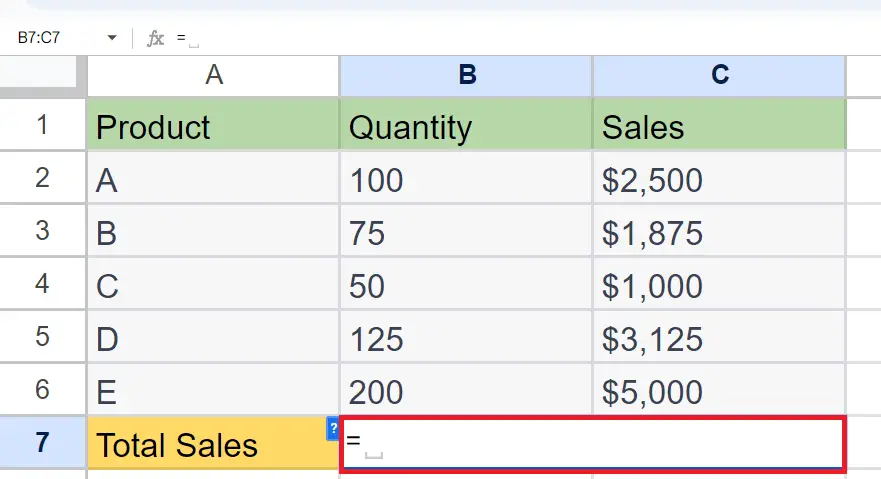
- Select a blank cell.
- Place an Equals sign in the blank cell.
Step 2 – Enter the SUM Function
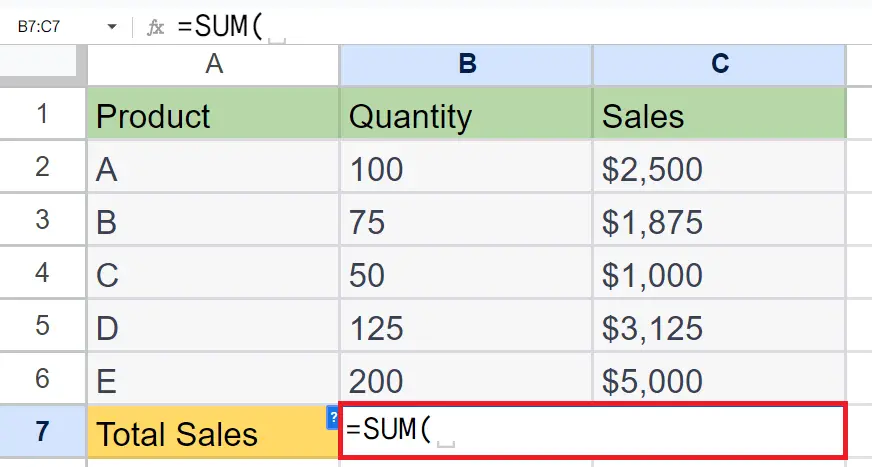
- Enter the SUM function next to the Equals sign.
- Open the parentheses.
Step 3 – Hover the Cursor over the First Cell
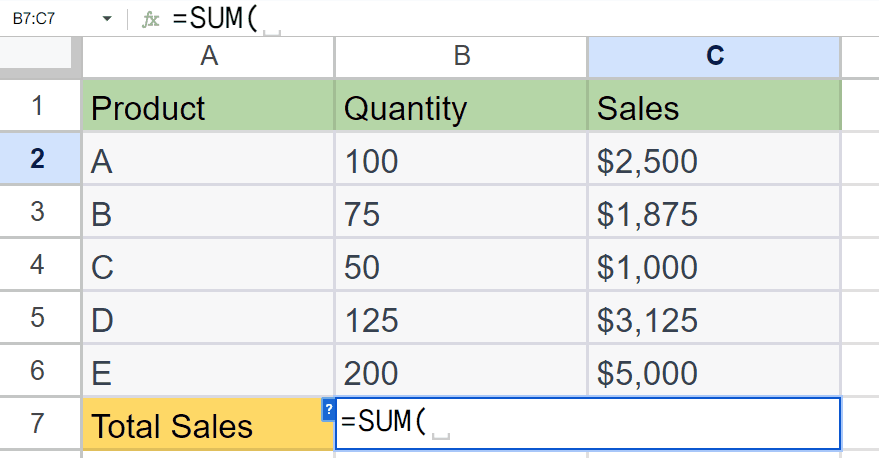
- Hover the cursor over the first cell of the range.
Step 4 – Select, Drag, and Drop the Cursor
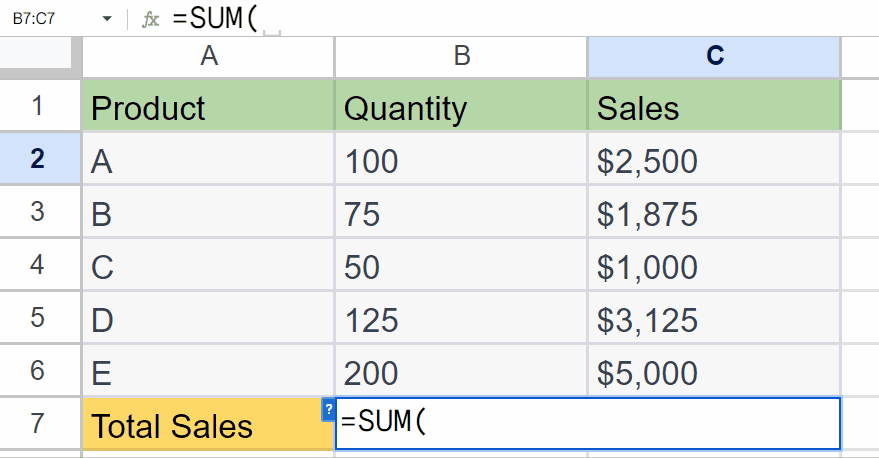
- Select the first cell.
- Drag the cursor over the range of cells you want to add.
- Drop the cursor on the last cell.
Step 5 – Close the Parenthesis and Press the Enter Key
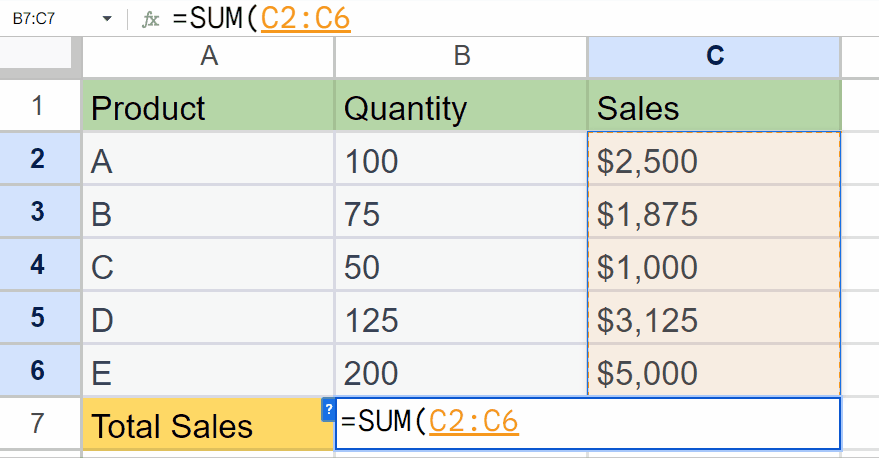
- Close the parenthesis of the SUM function.
- Press the Enter key.
- The contiguous range will be added.
Method 3: Adding a Non-Contiguous Range Using the CTRL Key
Step 1 – Select a Blank Cell and Place an Equals Sign
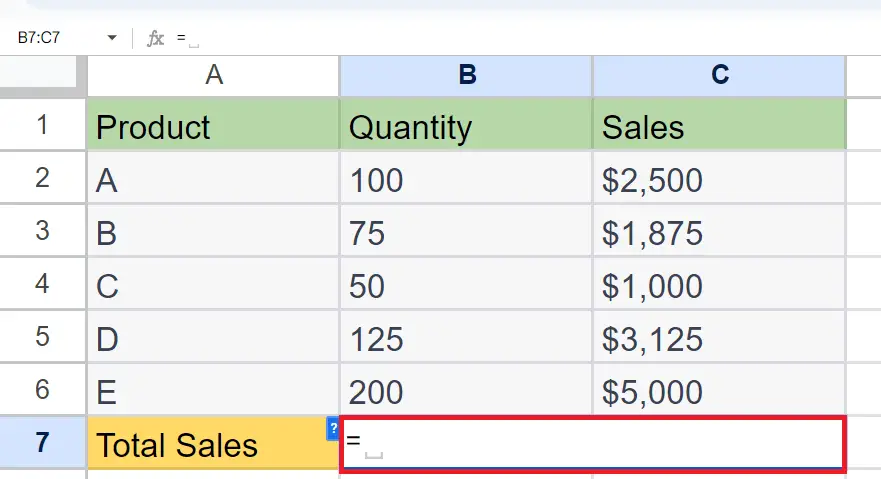
- Select a blank cell.
- Place an Equals sign in the blank cell.
Step 2 – Enter the SUM Function
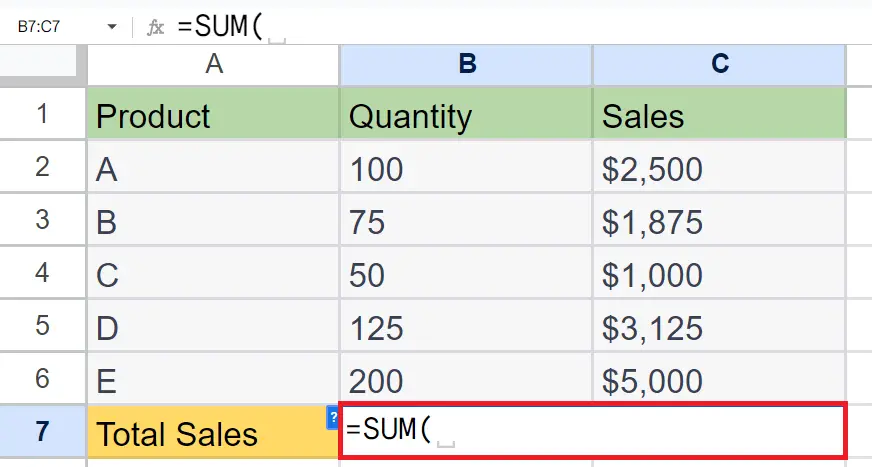
- Enter the SUM function next to the Equals sign.
- Open the parentheses.
Step 3 – Press and Hold the CTRL Key and Select the Cells
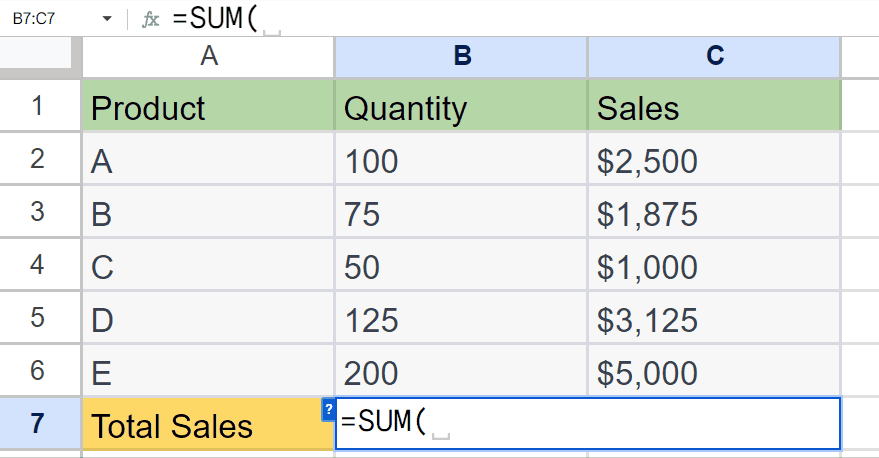
- Press and Hold the CTRL key.
- Select the cells of the non-contiguous range individually.
Step 4 – Close the Parenthesis and Press the Enter Key
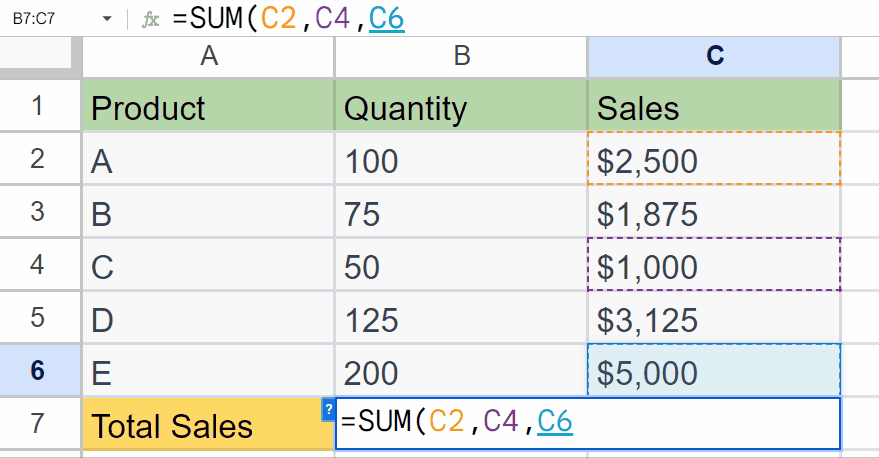
- Close the parenthesis of the SUM function.
- Press the Enter key.
- The non-contiguous range will be added.
Method 4: Adding a Non-Contiguous Range Manually
Step 1 – Select a Blank Cell and Place an Equals Sign
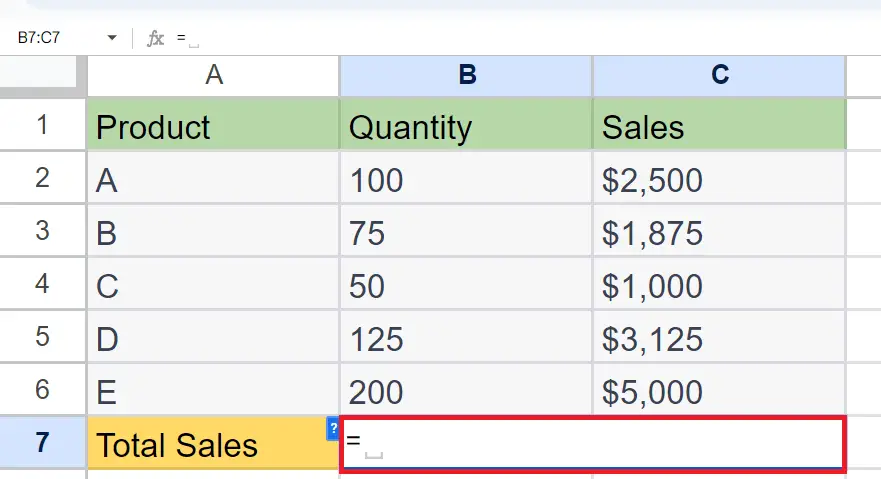
- Select a blank cell.
- Place an Equals sign in the blank cell.
Step 2 – Enter the SUM Function
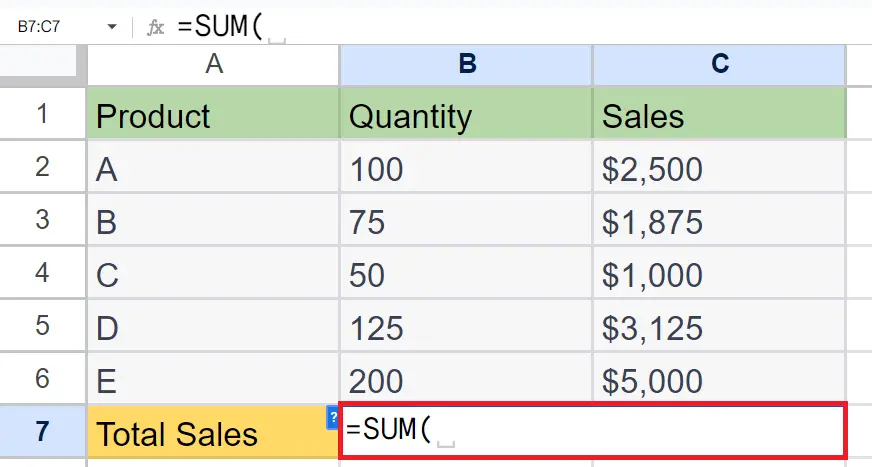
- Enter the SUM function next to the Equals sign.
- Open the parentheses.
Step 3 – Enter the Reference of Each Cell and Separate Them Using a Comma
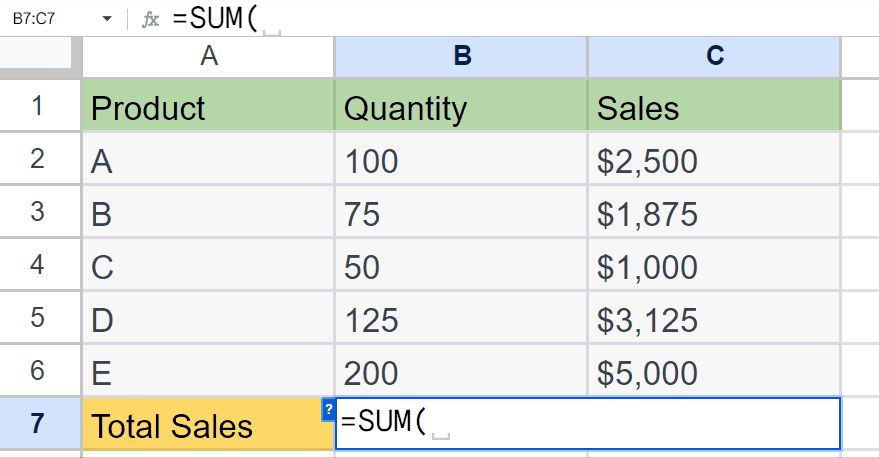
- Enter the reference of each cell and separate them using a comma i.e. B2, B4, B6.
Step 4 – Close the Parenthesis and Press the Enter Key
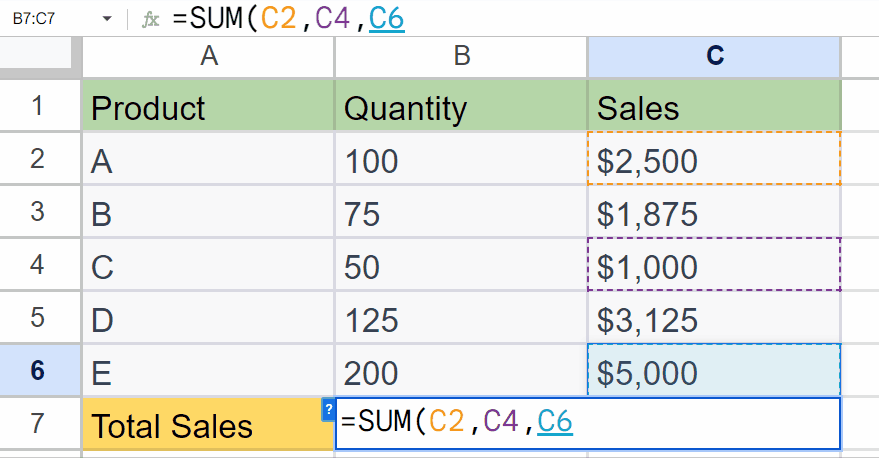
- Close the parenthesis of the SUM function.
- Press the Enter key.
- The non-contiguous range will be added.



